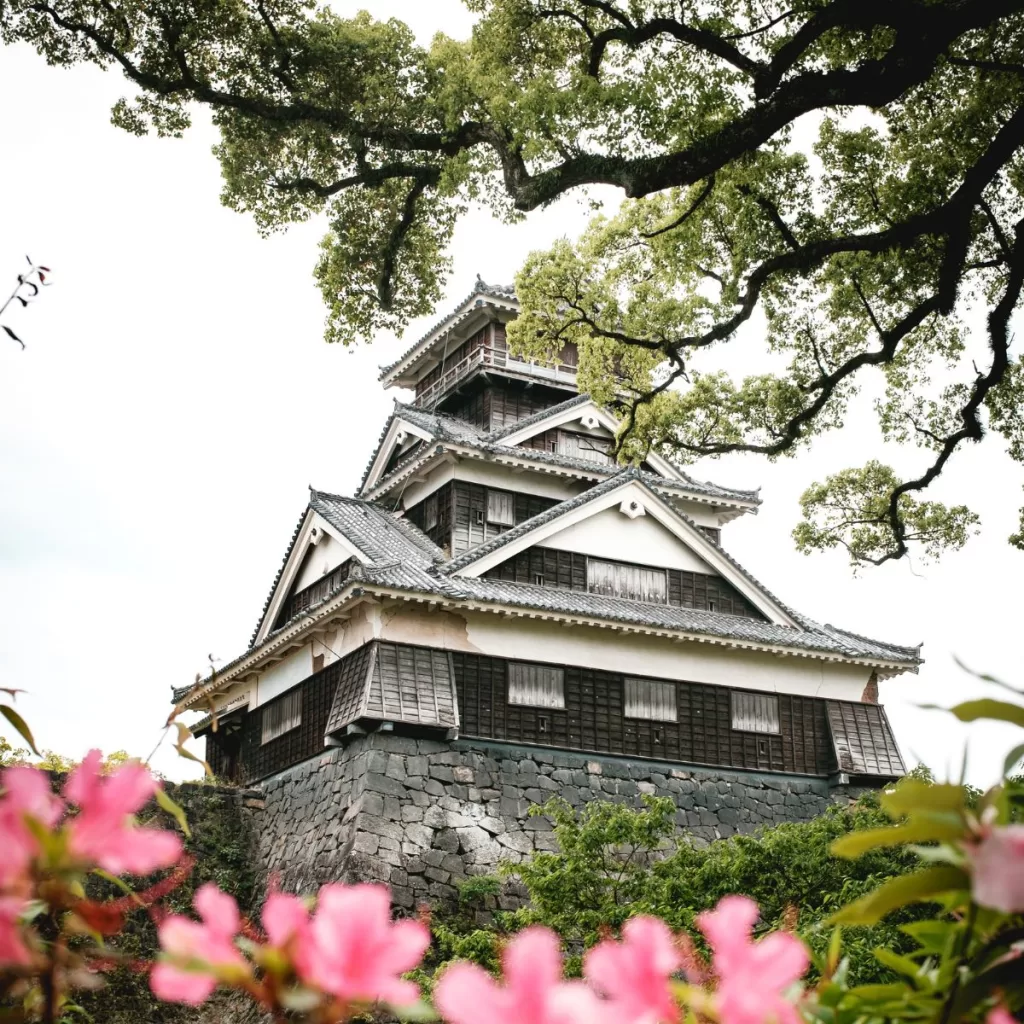Kumamoto Castle: A Historic Japanese Castle

Kumamoto Castle is one of Japan’s most famous and impressive castles. Located in the center of Kumamoto City on the island of Kyushu, this historic castle has stood for over 400 years as a symbol of the region’s rich history and culture.
Overview of Kumamoto Castle
Kumamoto Castle is situated on a natural fortress in central Kumamoto City. The castle complex has a circumference of about 5 kilometers and consists of a network of stone walls, moats, watchtowers, and grand gates. Within the castle grounds are several reconstructed palace buildings, the original Uto Turret, and the iconic castle keep.
The castle keep is a massive ferroconcrete reconstruction built in 1960. At 30 meters tall, it towers over the castle complex and offers panoramic views over Kumamoto City from its observation deck. Along with Himeji Castle and Matsumoto Castle, Kumamoto Castle is considered one of Japan’s three premier castles.
History and Significance
Original Construction (1601-1607)
Kumamoto Castle was originally built from 1601-1607 by the feudal lord Kato Kiyomasa. With state-of-the-art fortifications and 49 turrets, 18 turret gates, and 29 smaller gates across its sprawling grounds, Kumamoto Castle was one of the most formidable castles of its time.
The graceful curved walls of the Honmaru Bailey are known as “musha-gaeshi” (warrior returning), intended to thwart attacks against the castle. Rockfalls were also incorporated into the defenses. A smaller castle tower housed well and kitchen facilities for the castle’s defenders.
The Hosokawa Clan (1632-1871)
In 1632, the castle became the seat of the Hosokawa clan, who ruled Kumamoto Domain for over two centuries. The Hosokawa continued to fortify and expand Kumamoto Castle over their long tenure.
The prosperous era of the Hosokawa’s rule ended in 1871 with the abolition of the feudal system in Japan. Kumamoto Castle was garrisoned by the Imperial Japanese Army and then saw action in the Satsuma Rebellion of 1877.
Seizure, Fire, and Reconstruction
In 1877, the legendary samurai Saigo Takamori laid siege to Kumamoto Castle for nearly two months during the Satsuma Rebellion. Despite being severely outnumbered, the Imperial forces managed to defend the castle. However, the main castle tower burned down just before the siege began.
After the Meiji Period, Kumamoto citizens rallied to reconstruct the beloved castle. In 1960, a concrete reconstruction of the castle tower was built, along with reconstructions of palace buildings. From 1998-2008, extensive restoration work saw most of the 17th-century structures rebuilt. Kumamoto Castle remains an evolving and living part of Japan’s heritage.
What to See at Kumamoto Castle
Kumamoto Castle offers visitors a wealth of historical structures and modern reconstructions to explore:
Castle Tower
The massive concrete reconstruction of the castle tower built in 1960 houses a museum about the castle’s history. Visitors can climb to the top floor for panoramic views.
Uto Turret
This watchtower dates back to the original 17th-century construction of the castle. It survived the fires and destruction of the 1877 conflict.
Honmaru Goten Palace
Completed in 2008, this detailed reconstruction of the former daimyo palace allows visitors to experience the lavish lifestyle of the feudal lords who once inhabited Kumamoto Castle.
Turrets and Gates
There are 29 smaller gates and 49 turrets across the sprawling castle grounds, each giving insight into medieval Japanese architecture and defense systems.
Gardens and Grounds
Kumamoto Castle’s grounds feature scenic moats lined by cherry blossom trees that ignite in spring. The Hosokawa Gyobutei is an elegant Japanese garden nearby.
Visiting Kumamoto Castle
Kumamoto Castle is located a short tram ride from Kumamoto Station in central Kumamoto City. From the station, visitors can reach the castle grounds in 30-45 minutes on foot or just a few minutes by tram.
The castle sustained damage in the 2016 Kumamoto earthquakes, and reconstruction is still underway in parts of the complex. However, the castle tower and main attractions remain open to visitors. Exploration of this massive and historic castle typically takes 2-3 hours.
Kumamoto Castle stands today as one of Japan’s grandest and most scenic castles. Its enduring presence is a testament to the indomitable spirit of Kumamoto’s people across the centuries. No visit to Kyushu is complete without marveling at the sweeping vistas and deep history encapsulated by the walls of mighty Kumamoto Castle.
If you are amazed by the historic Kumamoto Castle, you’ll love exploring Kochi Castle, another picturesque Japanese castle with a rich history and beautiful grounds that is a must-see destination for any castle enthusiast.